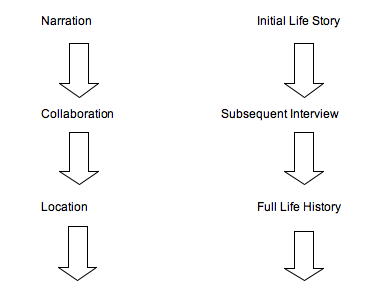Teacher Education Quarterly
The Rise of the Life Narrative
Let me give one concrete example of how location might work in studying teachers’ lives. In the life stories of teachers nowadays the normal storyline is one of technicians who follow government guidelines and teach a curriculum which is prescribed by governments or departments of education. The storyline therefore reflects a particular historical moment where the teacher’s work is constructed in a particular way. If, however, one compares current teacher storylines in England with the storylines collected 30 or 40 years ago, those stories would be of professionals who have autonomy and the capacity to decide what curriculum to teach and what content is organized to carry that curriculum. In seeking to locate the life story of current teachers, we would have to talk about the ongoing construction of the teachers’ work in a particular way. In coming to understand how contemporary teacher’s work provides a particular work context, we would get some sense of the historical context of teachers’ work and how this is subject to change and transition as the historical circumstances of schooling changes. Hence in moving from narration through to location a historical understanding of the teachers work might emerge.
So this is how time and context might emerge within life history research. To make sure that this temporal aspect is fully engaged within the project, we have divided our research between life history research and life-course research. In this way the historical context of learning can be examined either retrospectively or in contemporary “real time.” The retrospective understanding of the learning biography can be explored in life history research while the real time understanding of the ways in which learning biographies are lived can be understood through longitudinal life-course research. In this way we set retrospective life history research against contemporary longitudinal life-course research.
We have summarized the rationale for combining these two approaches in this way:

The reason for combining the two approaches is not only that it increases the timespan available for investigation (albeit that the retrospective study of the learning biography can only be done through the accounts and recollections of participants). It is also because we believe that the combination of the two approaches allows us to see more and gain a better understanding than if we would only use one of them. To put it simply: life-history research can add depth to the interpretation of the outcomes of longitudinal life-course research, while life-course research can help to unravel the complexities of life-history research. Each, in other words, is a potential source for contextualizing and interpreting the findings of the other. (Biesta, G., Hodkinson, P., & Goodson, I, 2004)
By moving from life stories towards full life histories and by building in life course analysis, we maximize the potential for understanding how time and context impinge on peoples’ “learning lives.” Such work then tries to put the individual life narrative back together with the collective context. In doing so it seeks to heal the rupture between the individual life narrative and the collective and historical experience.